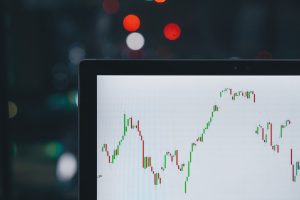Tracking momentum in forex can be a powerful tool for traders looking to identify potential trading opportunities. Momentum refers to the strength of a currency’s price movement in a particular direction. By tracking momentum, traders can identify potential trends and take advantage of price movements in either direction.
There are several ways to track momentum in forex, including using technical indicators, analyzing price action, and monitoring economic news releases. In this article, we will explore these methods in more detail and provide tips for traders looking to improve their ability to track momentum in forex.
Using Technical Indicators
Technical indicators are one of the most popular tools used by forex traders to track momentum. These indicators are mathematical calculations based on past price data that provide traders with insights into the strength and direction of a currency’s trend.
One of the most commonly used indicators for tracking momentum is the Relative Strength Index (RSI). The RSI measures the strength of a currency’s price movement by comparing the average gains and losses over a specified period. Traders typically look for RSI readings above 70 to indicate an overbought market and readings below 30 to indicate an oversold market.
Another popular technical indicator for tracking momentum is the Moving Average Convergence Divergence (MACD). The MACD is a trend-following indicator that compares two moving averages to identify changes in momentum. Traders typically look for bullish signals, such as a crossover of the MACD line above the signal line, to indicate a potential uptrend and bearish signals, such as a crossover of the MACD line below the signal line, to indicate a potential downtrend.
Analyzing Price Action
Price action analysis is another effective way to track momentum in forex. Price action refers to the movement of a currency’s price over time and can provide traders with valuable information about the strength and direction of a trend.
Traders can use a variety of price action patterns to identify potential trading opportunities, including trend lines, support and resistance levels, and candlestick patterns. For example, a bullish trend line that connects a series of higher lows can indicate an uptrend, while a bearish trend line that connects a series of lower highs can indicate a downtrend.
Candlestick patterns can also provide valuable insights into the strength and direction of a trend. For example, a bullish candlestick pattern such as a hammer or bullish engulfing pattern can indicate a potential uptrend, while a bearish candlestick pattern such as a shooting star or bearish engulfing pattern can indicate a potential downtrend.
Monitoring Economic News Releases
Economic news releases can also have a significant impact on forex prices and can provide traders with valuable insights into the strength and direction of a currency’s momentum. Traders can use economic calendars to track upcoming news releases and monitor the impact of these releases on forex prices.
For example, a positive economic news release such as an increase in GDP or a decrease in unemployment can indicate a potential uptrend, while a negative economic news release such as a decrease in GDP or an increase in unemployment can indicate a potential downtrend.
Tips for Tracking Momentum in Forex
Here are some tips for traders looking to improve their ability to track momentum in forex:
1. Use multiple indicators and analysis methods to confirm potential trends and trading opportunities.
2. Monitor economic news releases and be prepared to adjust your trading strategy based on the impact of these releases on forex prices.
3. Keep an eye on key support and resistance levels and use these levels to identify potential breakouts and reversals.
4. Use risk management techniques such as stop-loss orders and position sizing to manage your risk and protect your trading capital.
5. Finally, be patient and disciplined in your trading approach. Don’t chase after every potential trading opportunity and be prepared to sit on the sidelines if market conditions are not favorable.
Conclusion
Tracking momentum in forex can be a powerful tool for traders looking to identify potential trading opportunities. By using technical indicators, analyzing price action, and monitoring economic news releases, traders can gain valuable insights into the strength and direction of a currency’s momentum. By following these tips and remaining disciplined in your trading approach, you can improve your ability to track momentum in forex and increase your chances of success in the markets.


